Wydawnictwo Pomorskiej Szkoły Wyższej publikuje prace naukowe i edukacyjne z zakresu nauk społecznych i humanistycznych. Szczególną uwagę przykładamy do takich dyscyplin wiedzy jak pedagogika, etyka, administracja, zarządzanie, logistyka i bezpieczeństwo. Działalnością wydawniczą chcemy przyczyniać się do rozwoju i popularyzacji wiedzy oraz pogłębiania kompetencji zarówno środowisk akademickich, jak i szerokiego kręgu odbiorców i odbiorczyń zainteresowanych proponowaną tematyką.
Dbając o wysoką jakość merytoryczną publikowanych prac, Wydawnictwo stosuje procedury recenzowania publikacji naukowych zgodnie z zasadami etyki publikacyjnej oraz współpracuje z ekspertami i ekspertkami w powyższych dziedzinach wiedzy. W celu zapobiegania i przeciwdziałania nieuczciwym praktykom wydawniczym, naszą etykę wydawniczą opieramy na wytycznych Komitet ds. Etyki Publikacyjnej (Committee on Publication Ethics, COPE). Współpracujemy z wysoko wykwalifikowanym zespołem redaktorek, korektorów, grafików i projektantek DTP, gwarantując jakość i atrakcyjność proponowanych publikacji.
Wydawnictwo Pomorskiej Szkoły Wyższej stosuje najwyższe standardy oraz zasady etyki publikacyjnej w celu przeciwdziałania nieuczciwym praktykom publikacyjnym. Punktem odniesienia są w tym zakresie wytyczne Komitetu ds. Etyki Publikacyjnej (Committee on Publication Ethics, COPE).
Ochrona interesu prywatnego w procesie wywłaszczenia nieruchomości
Publikacja, jako jedyna w Polsce zawiera w sposób usystematyzowany procedurę ochrony interesu prywatnego w procesie wywłaszczania nieruchomości przez Skarb Państwa i jednostki samorządu terytorialnego w trybie i na zasadach przygotowania i realizacji inwestycji w zakresie dróg publicznych. W publikacji szeroko przedstawione zostały materialne i procesowe aspekty wywłaszczenia nieruchomości, problematyka wykonania decyzji o wywłaszczeniu nieruchomości, czy odrębności postępowania administracyjnego.
Pomorska Szkoła Wyższa
Starogard Gdański 2023
Link do książki w formacie elektronicznym
Zatrzymanie prewencyjne na podstawie ustawy o Policji
Publikacja, jako jedna z nielicznych w polskim dyskursie naukowym zawiera w sposób w miarę usystematyzowany procedurę zatrzymania prewencyjnego dokonywanego przez Policję, a także inne służby w Polsce. Powstała ona na kanwie zatrzymań prewencyjnych, jakich dokonywała policja w trakcie ogłoszonego stanu epidemii, protestów kobiet przeciwko orzeczeniu Trybunału Konstytucyjnego w sprawie aborcji, czy spontanicznych zgromadzeń organizowanych przez przeciwników rządzącej władzy. Autor przedstawił w niej materialne, jak i procesowe aspekty zatrzymania prewencyjnego, posiłkując się przykładami z życia, z jakimi codziennie w swojej pracy prawnika się spotykał.
Pomorska Szkoła Wyższa
Starogard Gdański 2024
Składany do Wydawnictwa tekst utworu powinien być dostosowany do poniższych zasad. Wydawnictwo Pomorskiej Szkoły Wyższej zastrzega sobie prawo nieprzyjęcia tekstu do druku, jeśli przekazane mu materiały będą znacząco odbiegały od przedstawionego schematu.
W opracowaniu redakcyjnym publikacji Wydawnictwa stosujemy następujące zasady szczegółowe:
a) cytaty:
b) kursywa:
c) antykwa:
d) liczebniki:
e) skróty i skrótowce:
f) przypisy:
UWAGA. Jeżeli dokument był opublikowany, powołujemy się na wersję opublikowaną, a nie archiwalną.
Wydawnictwo Pomorskiej Szkoły Wyższej dokłada wszelkich starań, aby publikacje spełniały wszystkie kryteria akademickie oraz edytorskie. Dbamy o zapewnienie najwyższego poziomu naukowego wydawanych książek i czasopism.
Radę Wydawnictwa Pomorskiej Szkoły Wyższej stanowią uznane autorytety w swoich dyscyplinach.
Przewodniczący
prof dr hab. Wojciech Polak
Członkowie i członkinie
prof. dr hab. Marcin Jurgielewicz - Politechnika Rzeszowska
dr hab. Tomasz Safjański, prof. Ucz - Akademia WSB Dąbrowa Górnicza
dr hab. Arkadiusz Durasiewicz, prof. Ucz - Wyższa Szkoła Kształcenia Zawodowego we Wrocławiu
dr hab. Marek Depczyński, prof. Ucz - Akademia Sztuki Wojennej
dr hab. Monika Kotowska, prof. Ucz - Uniwersytet Warmińsko - Mazurski w Olsztynie
dr hab. Norbert Malec, prof. Ucz - Uniwersytet w Siedlcach
prof. Wojciech Polak - UMK w Toruniu
dr hab. S. Galij-Skarbińska, prof. UMK
dr Tomasz Kozłowski - ISP PAN
dr Michał Przeperski - IHN PAN
dr Magdalena Staręga - Uniwersytet Gdański
Rocznik Prawo i Bezpieczeństwo – Law & Security to międzynarodowe czasopismo naukowe Wyższej Szkoły Kształcenia Zawodowego we Wrocławiu i Pomorskiej Szkoły Wyższej w Starogardzie Gdańskim, ukazujące się od 2023 roku.
Na łamach rocznika Prawo & Bezpieczeństwo – Law & Security” publikowane są oryginalne i wysokiej jakości artykuły, dotyczące twórczych i autorskich opracowań z rzetelnymi źródłami naukowymi i wynikami empirycznymi. Dodatkowo prezentowane są raporty z badań na temat stanu polskiego prawa, nauk o bezpieczeństwie oraz rozprawy przygotowywane przez znanych i cenionych autorów – zarówno polskich, jak i zagranicznych – cenionych ekspertów i autorytetów głównie ze środowisk naukowych i akademickich oraz praktyków.
Redaktor naczelny: dr Paweł Łabuz
Zastępca redaktora naczelnego: dr Irena Malinowska
Sekretarz redakcji: Agnieszka Sawicka
W najbliższych latach planowane jest włączanie periodyku do Wykazu Czasopism Punktowanych Ministerstwa Edukacji i Nauki.
ISSN 2956-7440
e-ISSN 2956-7610
Właściciel czasopisma:
Wyższa Szkoła Kształcenia Zawodowego / Pomorska Szkoła Wyższa w Starogardzie Gdańskim
Strona główna czasopisma Rocznik Prawo i Bezpieczeństwo

Pomorska Szkoła Wyższa
w Starogardzie Gdańskim
ul. Kościuszki 112/114
83-200 Starogard Gdański
woj. Pomorskie
Zamiejscowy Dział Obsługi
Studenta PSW
Plac Powstańców Sląskich 1,
53-329 Wrocław
Pomorska Szkoła Wyższa
w Starogardzie Gdańskim
to pierwsza uczelnia wyższa
na Kociewiu, która powstała
w 2001 roku.
PSW prowadzi studia I i II stopnia
oraz podyplomowe i kształci studentów
na kierunkach: Administracja, Kryminologia,
Pedagogika, Logistyka,
Bezpieczeństwo wewnętrzne,
Bezpieczeństwo państwa i ochrona ludności.